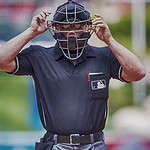A save is a statistic in baseball that is awarded to a relief pitcher who successfully finishes a game for the winning team. The concept was introduced in 1960 to recognize the importance of relief pitchers in the game of baseball. The purpose is to acknowledge the performance of a relief pitcher who preserves a lead for their team and secures a victory.

To qualify for a save, a relief pitcher must meet certain criteria established by Major League Baseball. The most important requirement is that the pitcher must finish the game for the winning team and not be the winning pitcher. Additionally, the pitcher must enter the game with a lead of no more than three runs and cannot give up the lead at any point during their appearance. Finally, the pitcher must pitch for at least one inning or face at least one batter in the ninth inning. Understanding the rules surrounding a save is crucial for fans and players alike to fully appreciate the performance of relief pitchers in baseball.
What is a Save in Baseball?
Definition
A save is an official statistic in baseball that is awarded to a relief pitcher who finishes a game for the winning team under certain circumstances. According to Rule 9.19 of Major League Baseball (MLB), a pitcher is credited with a save if he meets the following criteria:
- He is the finishing pitcher in a game won by his team.
- He is not the starting pitcher.
- He enters the game with a lead of no more than three runs and pitches at least one inning.
- He enters the game with the potential tying run either on base, at bat, or on deck.
- He pitches effectively and maintains his team’s lead until the end of the game.
The save statistic was introduced by Jerome Holtzman, a journalist for The Sporting News, in 1969. It was officially adopted by MLB in 1974.
Origin
The save statistic was created to recognize the contributions of relief pitchers, who were previously overshadowed by starting pitchers in terms of recognition and accolades. Before the introduction of the save, relief pitchers were only credited with a win or a loss, depending on the outcome of the game.
The formula for calculating a save has been revised several times over the years, but the basic parameters and specific criteria have remained the same. The current formula is as follows:
- A pitcher must pitch at least one-third of an inning to be credited with a save.
- A pitcher can only be credited with one per game.
- A pitcher cannot be credited with one if he is the winning pitcher or the pitcher of record when the game is tied.
- A pitcher can be credited with a save in a non-save situation if he pitches effectively and helps his team win the game.
The closer position, which is typically held by a team’s best relief pitcher, has become synonymous with the save statistic. However, middle relievers and other bullpen pitchers can also earn saves under the right circumstances.

Examples
Some notable examples of saves in baseball history include:
- Francisco Rodríguez’s 62-save season with the Los Angeles Angels in 2008, set a single-season record.
- Todd Van Poppel’s save in a game for the Texas Rangers in 1993, in which he retired the only batter he faced with the bases loaded and the tying run on deck.
- Trevor Hoffman’s 601 career saves, rank second all-time behind Mariano Rivera.
- Joaquín Benoit’s save in Game 1 of the 2016 World Series, in which he struck out the side in the ninth inning to preserve a 6-0 victory for the Cleveland Indians.
In conclusion, the save statistic is an important and widely recognized statistic in baseball that recognizes the contributions of relief pitchers. It has specific guidelines and criteria that must be met in order for a pitcher to earn one, and it has evolved over the years to reflect changes in the game.
Criteria for a Save
Definition of An Opportunity
In baseball, a save is an official statistic that is awarded to a relief pitcher who successfully finishes a game for his team while preserving a lead. To be eligible for one, a pitcher must enter the game with his team leading by no more than three runs, and he must finish the game without giving up the lead. The save is a relatively new statistic in baseball, having been officially recognized by Major League Baseball in 1969.
Three Basic Criteria
There are three basic criteria that a pitcher must meet in order to earn a save:
- He must enter the game with his team leading by no more than three runs, or with the tying run on base, at the plate, or on deck.
- He must pitch at least one inning.
- He must finish the game without giving up the lead.
Exceptions
There are a few exceptions to the basic criteria. For example, a pitcher can earn a save even if he enters the game with his team leading by more than three runs, as long as he pitches at least three innings. Similarly, a pitcher can earn a save even if he enters the game with his team trailing, as long as he pitches at least three innings and his team comes back to win.
Other Relevant Entities
The save is an important statistic for closers, who are relief pitchers who specialize in finishing games for their teams. However, it is not the only important statistic for relievers. Another important statistic is the hold, which is awarded to a relief pitcher who enters the game with his team leading and leaves the game without giving up the lead but does not finish the game. A blown save is awarded to a relief pitcher who enters the game with his team leading and gives up the lead, resulting in a loss for his team.
In addition to the basic criteria for a save, there are other factors that can affect a pitcher’s eligibility for the statistic. For example, a pitcher must throw at least one pitch to be eligible for a save. Also, if a pitcher enters the game with his team leading by more than three runs, but gives up a run to make the lead less than three runs, he is still eligible for a save if he finishes the game without giving up the lead.
Overall, the save is an important statistic in baseball, and it has a long and interesting history. The all-time leader in saves is Mariano Rivera, who earned 652 saves over his career with the New York Yankees. The save is an official statistic recognized by Major League Baseball, and it is an important tool for sportswriters and fans to evaluate the performance of relief pitchers.
How Is a Save Credited?
In baseball, a save is a statistic credited to a relief pitcher who finishes a game for the winning team and meets certain criteria. The criteria for a save are defined in Rule 10.20 of the Official Baseball Rules.
To be credited with a save, a relief pitcher must:
- Enter the game with a lead of no more than three runs and be the finishing pitcher for the winning team.
- Pitch at least one inning.
- Not give up the lead at any point during their appearance.
- Not give up more than three hits or one run during their appearance.
- Not pitch more than three innings.
If a relief pitcher meets all of these criteria, they are credited with a save. The statistic is used to measure a relief pitcher’s effectiveness in protecting leads and closing out games.
It’s worth noting that a pitcher can earn a save even if they give up a run during their appearance. However, if the run they give up is an earned run, it will count against their earned run average (ERA).
In addition, a pitcher cannot earn a save if they pitch in a tie game, regardless of the score. It can only be credited to a pitcher on the winning team.
Overall, the save is an important statistic in baseball that measures a relief pitcher’s ability to close out games and protect leads.
- Fenway Park Seating Chart: Best Seats To See the Red Sox - July 17, 2023
- What is RBI in Baseball: A Simple Explanation of The “Ribby” - July 3, 2023
- What is DFA in Baseball? A Term No Player Wants to Hear - July 3, 2023








